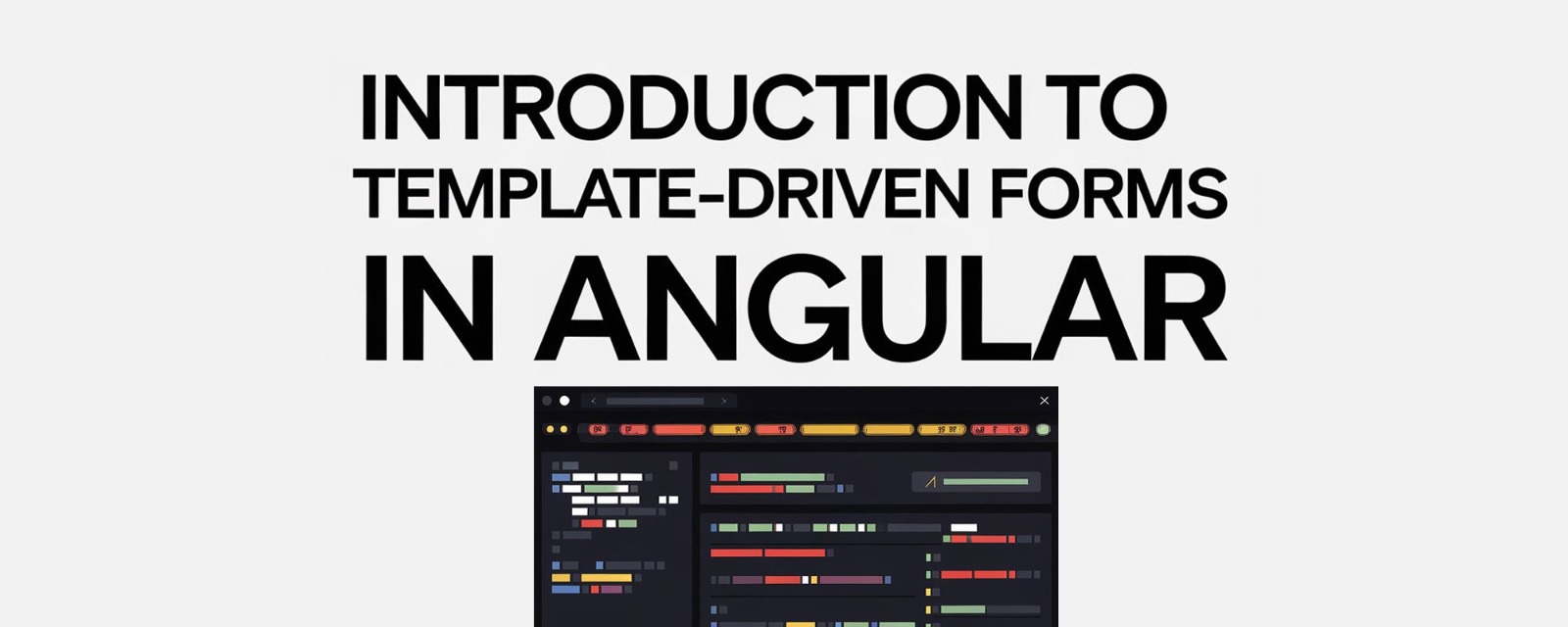Template-driven forms are a core feature of Angular, providing an intuitive and declarative way to manage user inputs. This approach is particularly useful for small to medium-sized forms or when you prefer working directly in the HTML template. In this blog, we will explore the basics of template-driven forms, from setting them up to implementing validations.
Why Choose Template-Driven Forms?
- Declarative: form logic written in HTML templates, making it easier to visualize the form's structure.
- Easy to Use: Easy to use forms with minimal validation requirements.
- Two-way data binding: automatically bind form fields to the model.
Settings Up Template-Driven Forms in Angular
Import the FormsModule
Before you can use template-driven forms, make sure that the FormsModule is imported into your Angular Module.
// app.module.ts
import { NgModule } from '@angular/core';
import { BrowserModule } from '@angular/platform-browser';
import { FormsModule } from '@angular/forms'; // Import FormsModule
import { AppComponent } from './app.component';
@NgModule({
declarations: [AppComponent],
imports: [BrowserModule, FormsModule], // Add FormsModule here
bootstrap: [AppComponent],
})
export class AppModule {}
Create a Basic Form in the Template
Here's a simple example of a form for user registration
<!-- app.component.html -->
<form #userForm="ngForm" (ngSubmit)="onSubmit(userForm)">
<div>
<label for="username">Username:</label>
<input
type="text"
id="username"
name="username"
[(ngModel)]="user.username"
#username="ngModel"
required
/>
<div *ngIf="username.invalid && username.touched">
<small *ngIf="username.errors?.required">Username is required.</small>
</div>
</div>
<div>
<label for="email">Email:</label>
<input
type="email"
id="email"
name="email"
[(ngModel)]="user.email"
#email="ngModel"
required
/>
<div *ngIf="email.invalid && email.touched">
<small *ngIf="email.errors?.required">Email is required.</small>
<small *ngIf="email.errors?.email">Invalid email address.</small>
</div>
</div>
<div>
<label for="password">Password:</label>
<input
type="password"
id="password"
name="password"
[(ngModel)]="user.password"
#password="ngModel"
required
minlength="6"
/>
<div *ngIf="password.invalid && password.touched">
<small *ngIf="password.errors?.required">Password is required.</small>
<small *ngIf="password.errors?.minlength">
Password must be at least 6 characters long.
</small>
</div>
</div>
<button type="submit" [disabled]="userForm.invalid">Submit</button>
</form>
Define the Component Logic
In the component, declare the model and the onSubmit method to handle form submissions.
// app.component.ts
import { Component } from '@angular/core';
@Component({
selector: 'app-root',
templateUrl: './app.component.html',
styleUrls: ['./app.component.css'],
})
export class AppComponent {
user = {
username: '',
email: '',
password: '',
};
onSubmit(form: any) {
if (form.valid) {
console.log('Form Submitted', this.user);
} else {
console.log('Form is invalid');
}
}
}
Key Features of Tempalte-Driven Forms
Form Validation
Angular offers built-in validators like required, email, and minlength that can be directly added as attributes. You can also define custom validators if needed.
Two-Way Data Binding
The [(ngModel)] directive binds form fields to the component's model, ensuring that any changes to the forms are automatically reflected in the model.
Accessing Form State
Using template references, #username = "ngModel" you can access the control's state, such as valid, invalid, touched, or untouched.
Advantages of Template-Driven Forms
- Simplicity: minimal boilerplate compared to reactive forms.
- Readability: Keeps form-related code in the template.
- Quick Setup: Great for small projects or quick prototypes.
Limitations
- Less control over the form compared to reactive forms.
- Not ideal for forms with dynamic fields or complex validation logic.
- Can become unwieldy for larger forms with multiple validations.
Conclusion
Template-driven forms are an excellent choice for small to medium-sized applications or when you need a quick and straightforward form solution. With features like two-way data binding and built-in validators, you can build robust forms without diving into too much cmplexity.




Login to leave a comment.